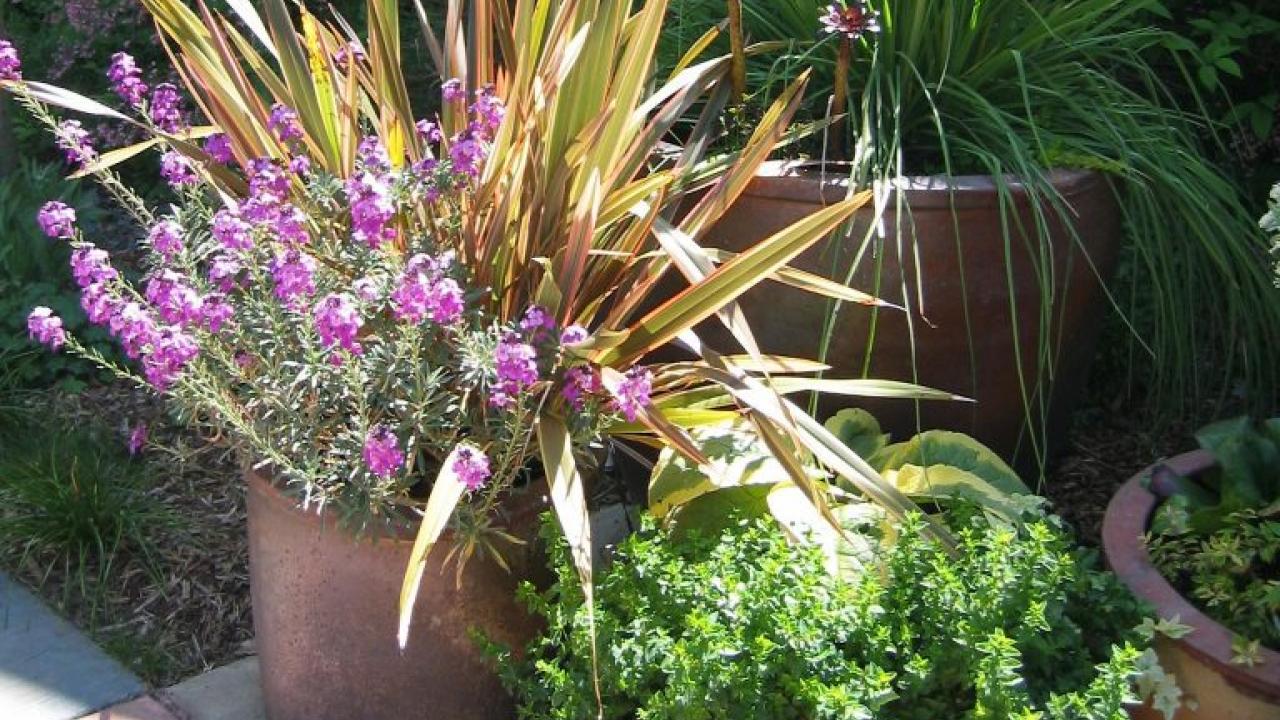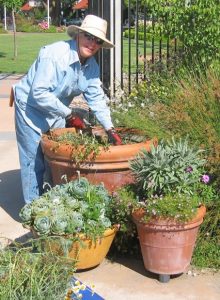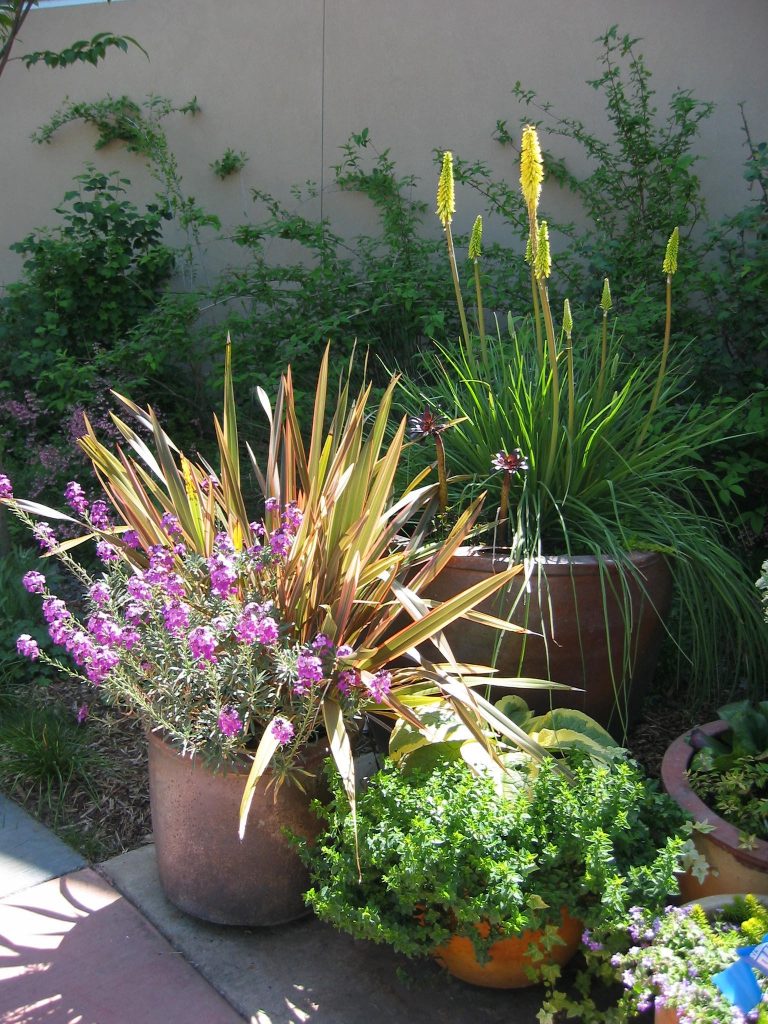
Creating a DIY Pollinator Garden
by Ellen Zagory
as seen in the Davis Enterprise

You don’t need a big yard or budget
Pollinators are big in the news because of threats to honey bees, but furry bumblebees, feisty hummingbirds and magical butterflies — any creature that carries pollen from one flower to the next — can accomplish pollination as well. The secret to drawing these garden dwellers to you is to provide what they are looking for — flowers — the fast food outlets of the natural world, serving up pollen and nectar daily.
You don’t need a big yard or budget, you can use pots on your patio, window boxes, raised beds and “hellstrips” between sidewalk and street and, by selecting the right plants, you put out a welcome snack. Create a simple, combined planting in a large pot from the suggested plants below, place it on a sunny deck or balcony, add water, and then just sit back and observe as the nature around you stops by for a visit. Pick three plants, one taller and upright like a sage or lavender, one medium sized like oregano, and one flat or spilling plant and voilà, you will have a pot planted for pollinators.
Daisies
One of the best plants for bees are daisies. These clever little flowers have rows of petals on the outside that surround many smaller tubular flowers packed together in a central disk. Disk flowers provide a convenient landing platform and easy access to pollen and nectar. Combine plants like seaside daisies (Erigeron), blanket flowers (Gaillardia) and Michaelmas daisies (Asters) to create a “daisy fest” from spring to fall with the sequence of their cheery blooms.
Lavender
Combine your daisy choice with a member of the mint family like lavender, oregano or catmint. Flowers from this family draw pollinators with their nectar – insect ambrosia that provides energy for flight. Long-blooming lavenders like the Lavandula X ginginsii ‘Goodwin Creek Gray’ have flowers over a long period from spring until late summer and will draw small butterflies and bees looking for a sip. The same goes for both culinary and ornamental oreganos, the latter of which provide long-blooming, delicate purple-lavender blossoms. Add catmint as a ground cover that creeps along the ground or spills over the edges of your container.

Sage
Flowering sages, especially the Gregg’s salvia or autumn sage (Salvia greggii and hybrids), are easy-to-grow, shrubby magnets for nectar seekers. Long-blooming, slightly woody plants, they flower in both spring and fall with many colorful flowers – most commonly red – but also available also in pinks, cream and combined colors. Named forms like ‘Desert Blaze’, ‘Red Swing’, ‘Flame’ and ‘Hot Lips’ are tough and dependable in our area and besides attracting a passing butterfly, may draw a hummingbird as well.
Butterfly Bush
Want an even simpler option for creating a buffet for pollinating garden inhabitants? Try a single dwarf Buddleia,the butterfly bush, named for its popularity with butterflies and attractiveness to hovering hummingbirds as well. Or, for the low-water gardener how about an architectural statement made with just the right container and a coral yucca (Hesperaloe parviflora). It’s spiky foliage and tall arches of coral pink flowers provide long-lasting flowers. Your friends will be impressed with your sophistication and the hummingbirds will thank you as well.
Everyone interested in gardening for pollinators, or simply adding a few attractive, low-water plants perfect for our region, is invited to attend the Friends of the Arboretum and Public Garden’s plant sale fundraisers where customers can choose from thousands of plants grown on site and acclimated to our area.
